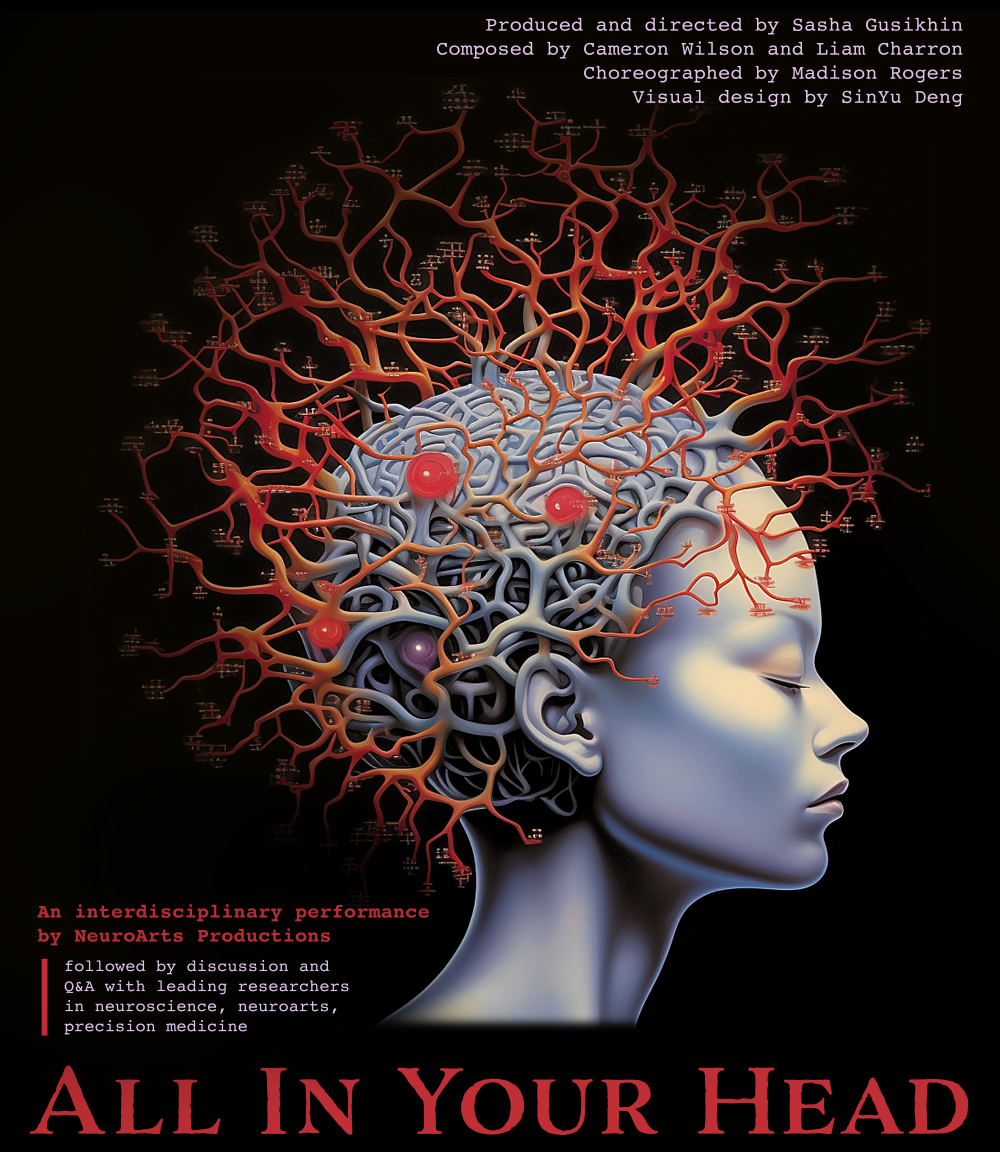All in Your Head Project
Sasha Gusikhin, School of Music, Theatre & Dance
Collaborators: Liam Charron, SMTD; Madison Rogers, SMTD; SinYu Deng, SMTD
Consultation: Dr. Xiaosi Gu, Neuroscience, Mount Sinai University; Dr. Jason Karlawish, Neuroscience, University of Pennsylvania; Ken Fischer, President Emeritus of UMS; Caitlin Lynch, Voice
 The “All in Your Head” project centers the intersection of neuroscience, mental health, dance, visual art, and jazz, with a mission to elevate mental health awareness from a biopsychosocial lens.
The “All in Your Head” project centers the intersection of neuroscience, mental health, dance, visual art, and jazz, with a mission to elevate mental health awareness from a biopsychosocial lens.
This four-movement performing arts work will explore the trial-and-error mental health treatment system, the brain’s neural connectivity, the neural circuitry of depression with neuroimaging, and the impact of environment and sociocultural factors on the conscious experience of depression and treatment.
This project raises conversations about the state of the mental health care system and directly addresses the stigma that influences policy around treatment access, but specifically highlights neuroscience in this conversation.
There is a clear gap in understanding the connection between science and mental health when addressing wellbeing, treatment, suicide prevention.
Often, mental illness is reduced to symptomology and subjective experience, but we are missing the full view that takes into account a person’s unique neurobiology, physiology, genetics, and sociocultural background. The mission of this project is to use the arts as a medium to bridge this gap.
After a full year of collaborating to write the multimodal work with my script leads, visual design leads, two composers, choreographer, and various professors advising the science content, we are heading into our tech week at the Duderstadt video studio.
Our premiere will be on February 9, with an invited dress on February 8 and live stream available to all. Following the performance, I am moderating a panel with Dr. Guillaume Dumas, Dr. Xiaosi Gu, Dr. Paul Jenkins, and PhD candidates Hannah Becker (depression and stigma) and Molly Jones (music and neural networks). The performance will ultimately be turned into a film that we intend to have screened this summer at the Arts on the Mind Festival in Philadelphia.
Also, the impact of this pilot event on audiences’ stigma levels, knowledge gain, and impetus for mental health advocacy will be assessed through quantitative and qualitative survey analysis after the performance. The project establishes measures that are custom-tailored to neuroarts events, which can be used to assess audience experience in future research. Furthermore, the analysis of this audience experience poses significant implications for shaping and improving the efficacy of future neuroarts events across the field.
Our group facilitates clear and accessible communication between all members of the collaborative neuroscience and arts teams. This has included leading active training sessions on topics in neuroscience so that the arts team is equipped with the necessary knowledge base.
The arts team has also led the neuroscience team in training and exploration in science communication translated through artistic mediums. We have also exchanged academic papers for further development of the context of precision medicine and neuroscience. In this cross-collaboration, there will be an ensured integration of the scientific and artistic content of the events.
I have fully realized my commitment to utilizing the arts for tangible community change, and I have honed skills in arts administration, community engagement, and creative project direction to lead up to this culmination of my passions.
I am leading a multi-talented and growing team, with members of the neuroscience team who use a deep knowledge base of science and mental health to advise our science-based content, and members of the artistic team who draw upon expertise in dance, jazz, composition, and design to develop our powerful works of art. As I facilitate these teams, it is clear that members are skilled and passionate about collaboration between diverse fields, and there is limitless educational potential in the interdisciplinary nature of this project.
